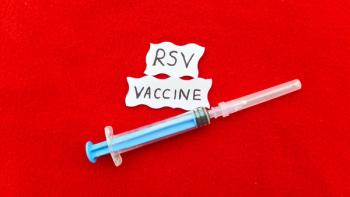
Report Links GLP-1 Medication to Decrease in Consumer-Packaged Goods, Food, and Beverages
Key Takeaways
- GLP-1 medications initially reduce food and beverage purchases, with spending normalizing by year-end.
- Users increased spending on recommended foods and hydration products, while reducing certain health remedies.
The data from the report show how nutritional choices compliment the use of glucagon-like peptide-1 receptor agonists and how health care providers can educate patients further.
Purchasing habits of those using glucagon-like peptide-1 (GLP-1) medication changed during the first 3 months of usage, indicating that those using the medication made fewer food and beverage purchases during that period. However, the purchasing returned closer to benchmark levels by the end of the first year, according to a report by Circana.1
“A deeper understanding of GLP-1 medications and their roles in weight loss has unlocked new opportunities to enhance the food, beverage, and non-food products that support consumers’ overall well-being,” Sally Lyons Wyatt, global executive vice president and chief advisor at Circana, said in a news release. “For consumers needing help with getting to optimal GLP-1 levels, working with a medical professional to determine the right mix of medications, supplements, and/or [consumer packaged goods (CPG)] products will remain vital in managing their health over the long term.”1
According to the report, 56% of individuals taking GLP-1 medications are using them for weight loss. GLP-1 medications are used as treatment for type 2 diabetes, with recent indications for cardiovascular disease, sleep apnea, and weight loss. GLP-1 receptor agonists include semaglutide (Ozempic, Wegovy; Novo Nordisk), tirzepatide (Zepbound, Mounjaro; Eli Lilly), and liraglutide (Saxenda, Victoza; Novo Nordisk), among others. For weight loss, the approved medications are used as an adjunct with lifestyle modifications.2
Investigators of the report found that, on average, patients who used GLP-1 medications for weight loss typically spent more on CPG foods, beverages, and food services before the use of the medication compared with non-users. There was a decrease in relative household spending on foods that prescribers recommend users avoid—including spicy foods, fatty proteins, and beverages with added sugar. Likewise, spending on foods that were recommended increased compared with those who did not use GLP-1 medication. Investigators also saw a shift in gum, mints, and non-chocolate candy, which can be used as relief for bad breath and dry mouth associated with GLP-1 usage.2
Additionally, there was an uptick in spending associated with drinkware and water filtration devices compared with non-GLP-1 users, leading investigators to believe this could be due to hydration recommendations. There was also an increase in gastrointestinal products because GLP-1 medication have gastrointestinal-related adverse events. There was a decrease in spending on sleep remedies, analgesics, home health care products, and foot care, which investigators believe is linked to improvements in overall health.
Investigators also found that the monthly spending for GLP-1 users decreased 3 points from the pre-usage baseline during the first year of initiating treatment. Produce and deli departments saw an increase in sales, indicating that individuals were seeking foods with added benefits, including protein, and foods with less sugar, salt, and carbohydrates.2
Furthermore, GLP-1 users were initially skewed towards quick service restaurants, but during the course of the first year, they shifted their spending to grocery food service, casual dining, and midscale restaurants, according to the investigators. Moving forward, the investigators emphasize the important of education on foods that compliment GLP-1 and promote balanced nutrition. Furthermore, health care providers can partner with consumer companies to establish comprehensive wellness programs, specifically for those utilizing GLP-1 medications, which can enhance the effectiveness in a holistic approach combining lifestyle improvements and pharmaceutical interventions.2
As part of the report, Circana conducted a survey that included individuals who either are using or did use GLP-1 medication. The monthly purchases for households for GLP-1 users and those who did not use GLP-1s were used. The analysis included data from June 2022 to June 2024, including individuals who submitted at least 10 receipts per month.2
REFERENCES
1. Circana Report Highlights the Role of Personalization in Supporting GLP-1 Weight-Loss Users. News release. Circana. January 6, 2025. Accessed January 7, 2025. https://www.globenewswire.com/news-release/2025/01/06/3004697/0/en/Circana-Report-Highlights-the-Role-of-Personalization-in-Supporting-GLP-1-Weight-Loss-Users.html
2. Circana. Early Days of a Revoltution: How GLP-1s Are Already Changing Consumer Spending. December 2024. Accessed January 7, 2025. https://www.circana.com/wp-content/uploads/2024/12/GLP1-report.pdf
Newsletter
Stay informed on drug updates, treatment guidelines, and pharmacy practice trends—subscribe to Pharmacy Times for weekly clinical insights.




















































































































































































































